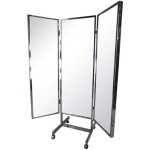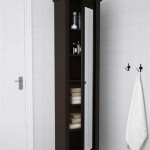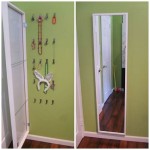How to Use Screen Mirroring from iPhone to Macbook Air/TV
Screen mirroring allows users to display the content of an iPhone's screen on a larger display, such as a Macbook Air or a television. This functionality offers several benefits, including enhanced presentations, shared gaming experiences, and convenient media consumption. This article details the methods available for mirroring an iPhone's screen to both a Macbook Air and a TV.
Mirroring to a Macbook Air: Two primary methods facilitate screen mirroring from an iPhone to a Macbook Air: QuickTime Player and third-party applications.
Using QuickTime Player: QuickTime Player, a pre-installed application on macOS, offers a straightforward screen mirroring solution. Connect the iPhone to the Macbook Air using a USB cable. Open QuickTime Player. From the File menu, select "New Movie Recording." A recording window will appear. Click the down arrow next to the record button. Select the iPhone as the camera and microphone input. The iPhone's screen will then be mirrored on the Macbook Air.
Using Third-Party Applications: Several third-party applications offer screen mirroring capabilities, often with additional features such as recording and enhanced resolution. These applications typically require installation on both the iPhone and the Macbook Air. Users should research and select an application that meets their specific needs. Once installed, follow the application's instructions to establish the mirroring connection.
Considerations for Macbook Air Mirroring: When mirroring to a Macbook Air, ensure both devices have compatible operating system versions. A stable internet connection is not required for wired connections via USB but may be necessary for some third-party applications relying on Wi-Fi. The quality of the mirrored display will depend on factors such as the cable used and the application's settings.
Mirroring to a TV: Mirroring an iPhone's screen to a TV can be achieved primarily through Apple AirPlay, or by utilizing specific adapters in conjunction with compatible TVs.
Using AirPlay: AirPlay allows wireless streaming of content from an iPhone to an Apple TV or AirPlay 2-compatible smart TV. Ensure both the iPhone and the Apple TV or compatible smart TV are connected to the same Wi-Fi network. On the iPhone, open Control Center. Tap the "Screen Mirroring" icon. Select the Apple TV or compatible smart TV from the list of available devices. The iPhone's screen will then be mirrored on the TV.
AirPlay 2 Compatibility: Determining AirPlay 2 compatibility with smart TVs can be accomplished by checking the manufacturer's specifications or documentation. AirPlay 2 allows for more advanced features, such as multi-room audio and improved streaming performance.
Using Adapters with Compatible TVs: For TVs that do not support AirPlay, adapters may provide a mirroring solution. These adapters typically connect to the TV's HDMI port and create a Wi-Fi network to which the iPhone can connect. They often require specific applications to facilitate the mirroring process. Consult the adapter's instructions for detailed setup and usage guidelines.
Troubleshooting AirPlay and Adapter Issues: If encountering difficulties with AirPlay, ensure both devices are on the same Wi-Fi network and have the latest software updates installed. Restarting both devices can often resolve temporary connection issues. For adapters, verify compatibility with the specific iPhone and TV models. Ensure the adapter's firmware is up-to-date.
Optimizing Mirroring Performance: Several factors can influence the quality and performance of screen mirroring. A strong and stable Wi-Fi network is essential for AirPlay and adapter-based mirroring. Closing unnecessary applications on the iPhone can free up resources and improve performance. Reducing the distance between the iPhone and the receiving device can also enhance the connection stability.
Security Considerations for Screen Mirroring: When using screen mirroring, be mindful of the content being displayed, especially in public or shared environments. Sensitive information, such as passwords or financial data, should not be displayed during mirroring sessions. Ensure the connection between the iPhone and the receiving device is secure, particularly when using third-party applications or adapters.
Choosing the Right Mirroring Method: The optimal method for screen mirroring depends on individual needs and available equipment. For quick and easy mirroring to a Macbook Air, QuickTime Player offers a convenient solution. AirPlay provides a seamless wireless experience for mirroring to compatible TVs. Adapters offer broader compatibility with various TV models but may require additional setup and configuration.
Exploring Advanced Mirroring Features: Some third-party applications and specific TV models offer advanced mirroring features, such as adjusting the aspect ratio, customizing resolution, and adding overlays. Explore the settings and documentation of the chosen mirroring method to discover and utilize these advanced capabilities.

How To Use Apple Airplay Mirror Your Iphone Mac Screen On Tv Roku And More Cnet

How To Use Apple Airplay Mirror Your Iphone Mac Screen On Tv Roku And More Cnet

How To Mirror A Mac Tv Osxdaily

Use Airplay To Stream What S On Your Mac An Hdtv Apple Support Au

Stream Audio And From Your Mac With Airplay Apple Support Ph

Use Airplay To Stream Or Mirror The Screen Of Your Iphone Ipad Apple Support

How To Mirror A Mac Tv Osxdaily

Use Airplay To Stream Or Mirror The Screen Of Your Iphone Ipad Apple Support

Use Airplay To Stream Or Mirror The Screen Of Your Iphone Ipad Apple Support

Connect Hisense Tv To Apple Mac Wireless Screen Mirror App








